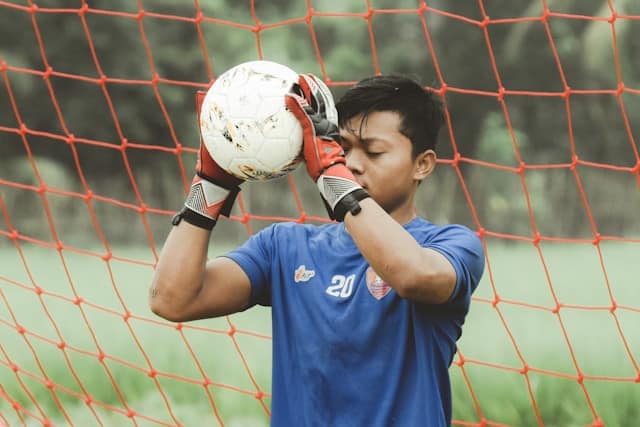With the rapid advancement of technology, virtual reality (VR) has emerged as a powerful tool in various fields, and sports training is no exception. One particular area that has seen significant research and development is the use of VR for goalkeeper reflex training in soccer. Traditional training methods have relied heavily on physical drills and practice games. However, the advent of VR technology offers promising avenues for improving goalkeeper performance, decision-making skills and reaction time. This article delves into the latest research findings on this subject, exploring the scope, benefits, and potential challenges of using VR in goalkeeper training.
VR in Sports Training: An Overview
Before diving into the specifics of goalkeeper training, it is essential to understand the broader context of VR in sports training. Virtual reality technologies present a unique opportunity for athletes to train under controlled environments, where specific situations can be replicated and manipulated at will, providing a platform for focused and efficient training.
A lire aussi : The ultimate adventure: canyoning in bali
Several research studies have been conducted analyzing the efficacy of VR in sports training. A substantial number of these studies have found VR to be a promising tool for enhancing athletes’ performance. The element of reality introduced through VR allows the athletes to experience real game situations which aid in better decision-making during actual games.
The Use of VR in Goalkeeper Training
Goalkeeping in soccer is a complex task that requires intense training and focus. It involves a combination of physical skills, such as reflexes and agility, cognitive abilities for decision-making, and psychological resilience to handle pressure. In recent years, researchers and trainers have started exploring the potential benefits of using VR for goalkeeper training.
Lire également : What’s the Best Approach to Tactical Periodization in Soccer During Pre-Season?
One study conducted by Crossref scholars focused on the use of VR in improving goalkeepers’ decision-making skills during penalty kicks. The participants underwent VR-based training where they were exposed to various penalty kick scenarios. The results showed a significant improvement in their decision-making abilities and reaction times when compared to the control group that underwent traditional training methods.
Advantages of Using VR in Goalkeeper Training
The primary advantage of using VR in goalkeeper training lies in the virtual reality’s ability to create an immersive environment that closely mimics real game situations. This immersive experience allows goalkeepers to practice their skills and make decisions in a controlled setting, which can directly translate to improved performance during actual games.
Additionally, VR training can be tailored to target specific skills or situations. For instance, a goalkeeper can be trained to respond to different penalty kick styles or to make split-second decisions under pressure. This level of customization can help goalkeepers optimize their training time and efforts.
Another significant benefit of VR training is that it reduces the risk of physical injury. Goalkeepers can practice their skills and reflexes without the physical strain and risk associated with real games or practice sessions.
Challenges and Future Research Directions
Despite its potential benefits, the use of VR in goalkeeper training is not without challenges. One major concern is the cost associated with VR equipment and software. While these costs are decreasing as technology evolves, investing in VR can still be prohibitive for many sports clubs or individual goalkeepers.
Moreover, while VR can simulate real game situations, it cannot completely replicate the physical exertion and conditions of actual games. Therefore, it is important to balance VR training with traditional physical training methods.
Future research should focus on exploring the long-term benefits and potential drawbacks of VR training. More controlled intervention studies with larger groups of participants are needed to further establish the effectiveness of VR in enhancing goalkeeper performance.
In conclusion, the use of VR in goalkeeper training is an emerging field with significant potential. As technology continues to evolve and more research is conducted, we can expect to see more widespread adoption of VR in goalkeeper training and sports training more broadly.
The Impact of VR on Goalkeeper’s Cognitive Skills and Reaction Times
Researchers have been increasingly exploring the impact of VR on enhancing the cognitive skills and reaction times of soccer players, particularly goalkeepers. Goalkeeping is a high-pressure role that demands excellent reflexes and decision-making abilities. Training these skills traditionally involves repetitive physical drills and practice games. However, the use of VR introduces a more immersive and targeted approach to training.
In a study conducted by Crossref scholars, goalkeepers underwent VR-based training sessions that exposed them to various penalty kick scenarios. The results, according to Pubmed, illustrated a significant improvement in the goalkeepers’ decision-making abilities and reaction times compared to the control group that underwent traditional training methods. The goalkeepers were able to train their reflexes and decision-making in an immersive virtual environment that closely mimicked real game situations. This not only improved their performance but also reduced the risk of physical injury.
The use of head-mounted displays in VR training further enhanced the goalkeepers’ perceptual-cognitive skills. The goalkeepers had to rely on their cognitive skills to assess and react to various penalty kicks, improving their inhibitory control and decision-making skills. The training also led to a notable reduction in the goalkeepers’ heart rate, suggesting that VR training could potentially improve their physiological responses to high-pressure situations.
However, it’s important to remember that while VR can simulate real game situations, it cannot fully replicate the physical exertion and conditions of actual games. Therefore, a balanced mix of VR and traditional physical training is crucial.
Future Research and Conclusion
Though the use of VR in goalkeeper training has shown promising results, there’s a need for more exhaustive research. Future research should focus on conducting controlled intervention studies with larger groups of participants to establish the long-term benefits and potential drawbacks of VR training. Also, more studies are needed to explore the cost-effectiveness of using VR in sports training. The high cost of VR equipment and software could be prohibitive for many sports clubs or individual soccer players.
Moreover, the sports world needs to continue exploring innovative ways to integrate VR into traditional training methods. The potential benefits of using VR in goalkeeper training and sports training more broadly are too significant to ignore.
In conclusion, despite the challenges, the use of VR in goalkeeper training is an exciting development in sports training. The ability to train in a virtual environment that closely mimics real-life situations is a powerful tool for enhancing performance. As technology evolves and research continues, we can expect to see VR becoming an integral part of goalkeeper training. The future of sports training is here, and it’s virtual.











